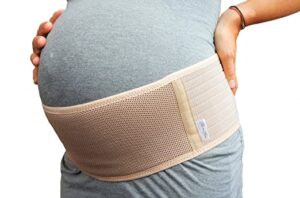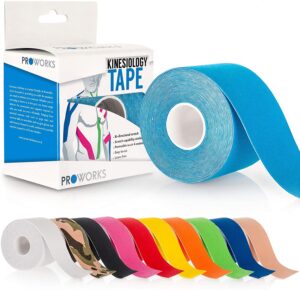Lower back pain can be central or one or both sides of the back. It might affect the buttocks or groin. If a nerve is involved then the pain might radiate down the leg (usually known as sciatica).
Symptoms:
-
Pain or aching in the lower back, can be one sided or widespread across the back. Pain can go into one or both buttocks also.
-
Pain can be achy, stabbing, sharp or sometimes shooting.
-
The pain might be worse when you are static and in one position for a while but it could also be worse with movement – try to follow what your body needs, if it hurts then do what doesn’t.
-
Often lower back pain is more noticeable at night, this is sometimes due to the position you are in (read our blog on optimal sleep positions) but it might also be because you are at rest and just more aware of sensations in and around your body.
-
Lower back pain can cause inflammation around the nerves of the back also, this could cause some radiating pains down the leg(s). This is more common in ladies with a history of back issues. Always tell your midwife or GP if you have radiating pains as there are certain things that they might want to monitor.
Causes:
-
Hormone changes.
-
Weight gain.
-
Weakness (abdominal region in particular).
-
Rectus Abdominis separation (diastasis recti).
-
History of back pain (pre-pregnancy or in other pregnancies).
-
Changes in posture.
-
Stress.
Here is what the evidence says about the treatment options:
Exercise – Evidence is very strong when it comes to exercise / strength training for lower back pain. This study found that exercise helped to reduce the risk of low back pain and therefore rates of sick leave in pregnant women. THIS study compared exercise with no exercise and found that prenatal exercise decreased the severity of low back pain and pelvic girdle pain during and following pregnancy.
Yoga – is a form of exercise that has been shown to be safe and effective in pregnancy and post birth. There are lots of Online Yoga programmes available, have a look at our Top 5 here (and why we love them)! You can also read our blog on how yoga can help in other ways.

Pilates – This study really supports the use of Pilates in chronic back pain issues. It is not specific to pregnancy but often back pain in pregnancy is related to an underlying condition that needs further treatment during / after pregnancy. Have a look at our Top 5 online Pilates programmes here.
TENS – evidence is in support of the use of TENS machines in pregnancy but the evidence is limited or of low quality, when it comes to treating low back pains. Always speak to your midwife or GP before using a TENS machine to check it is the right course of action for you (and your baby). TENS is thought of as short-term relief and is usually recommended in conjunction with other treatments.
There are many different TENS machines available to buy, so if you are thinking of TENS as a treatment option then have a look at our Top 5 picks to make things a little easier.
Pregnancy Support Belt – evidence is available for the use of support belts in pregnancy. THIS study concluded that wearing a support belt during pregnancy can have beneficial effects such as; reduced lower back pain and pelvic girdle pain, improvement of functionality and mobility and reduction of risk of fall during pregnancy.
There are currently no studies to show which support belts work best or for how long you should be wearing them, so we have put together our top 5 choices (here) to help guide you based on what they can help with and what we like about them.
Pregnancy support Pillow – There is little evidence in support of the pregnancy pillow. That’s not to say that it doesn’t work, it just means that there hasn’t been a need to carry out studies on them. A pregnancy pillow aims to help keep your spine and hips in a neutral position whilst lying on your side. I know from personal experience that they are very comfortable and can double up as a feeding pillow once the baby is born, I think they’re a good investment but whether they will help to alleviate back pain – the jury is still out on that one.
Have a look at our Top 5 Pregnancy Pillows here.

Doughnut cushions – a lot of studies have been carried out in order to check the effects of doughnut cushions on pressure relief. The studies are always in their favour, so if pain is an issue when sitting then something like this might help to take some of the pressure off the affected area. Various types of cushions are on the market, have a look at our Top 5 pressure relief cushions HERE.

Kinesio Tape – evidence is good for the use of K-Tape in lower back pain during pregnancy. You will need someone to help you to apply the tape initially but it will usually stay in place for a few days after that. It is a safe and simple treatment to try, the only thing to watch for with tape use is allergies, keep an eye on the skin where the tape has been applied and if you feel any discomfort, itching, burning then remove it straight away.
HERE is a video on how you would apply it and THIS is the tape we usually recommend (based on our own use and reviews).
Heat – Evidence suggests that heat can be beneficial (particularly in the short term) for pain relief in the back and when it comes to pelvic or period-type pains. Heat helps to increase blood flow to the desired area, resulting in more relaxed muscles and a reduction in static fluids. You can use a hot-water bottle as a good heat source or get yourself a wheat-bag that you heat in the microwave (the heat from these usually last about 15 minutes). There is also the option of the heat patches like these which last about 12hrs and are self adhesive.
Symptoms to watch out for:
If you have any of the following symptoms then speak to your GP right away or go to your nearest accident and emergency department immediately:
-
Severe low back pain.
-
Pain, numbness, or weakness in one or both legs that causes you to stumble or have trouble getting up from a chair.
-
Loss of or altered sensations in your legs, buttocks, inner thighs, feet or areas that you sit on when in a chair (including genitals / anus) that is severe or gets worse and worse.
-
Recent problem with bladder or bowel function, such as trouble eliminating urine or waste (retention) or trouble holding it (incontinence).
-
Sexual dysfunction that has come on suddenly.
Cauda Equina Syndrome is a very rare but very serious condition that must be addressed immediately to prevent any lasting damage to the nerves involved. You may have one of the above symptoms of a number of these symptoms. Report any changes to your GP / Midwife immediately.
-
Severe pain at night (usually in the legs) causing disturbed sleep.
-
Pain and numbness in the leg at rest and/or while walking.
-
Pain relief experienced mainly while sitting on a chair with the feet hanging down.
-
Pronounced swelling in the feet and ankles (often pregnancy related so speak to your health care provider if this happens).
-
Pale colour and less warmth in the skin over the toes and feet compared to the legs.
Acute Limb Ischemia is a condition which occurs due to decreased or loss of blood supply to the legs. Leg pain in acute limb ischemia may feel similar to sciatica pain. It is essential that you seek help for the above symptoms as soon as possible to aid your recovery and prevent any long term damage.





